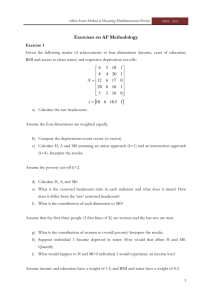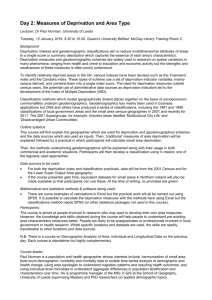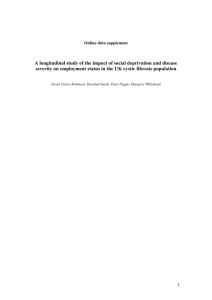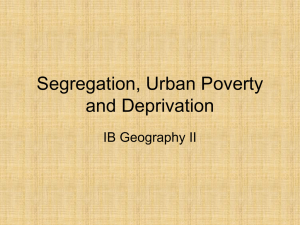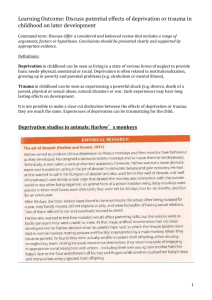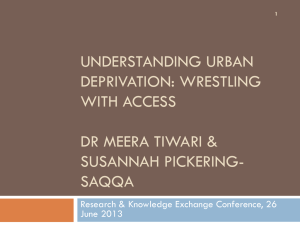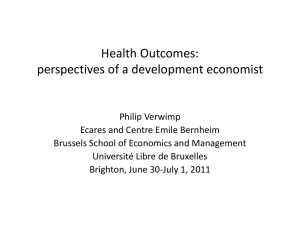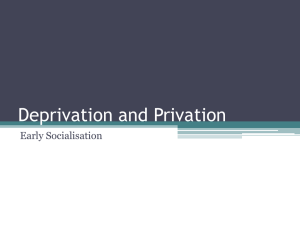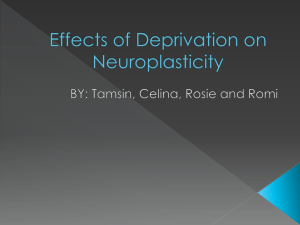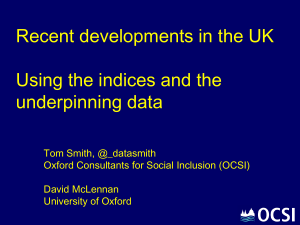no 1018 re-submission_1
advertisement
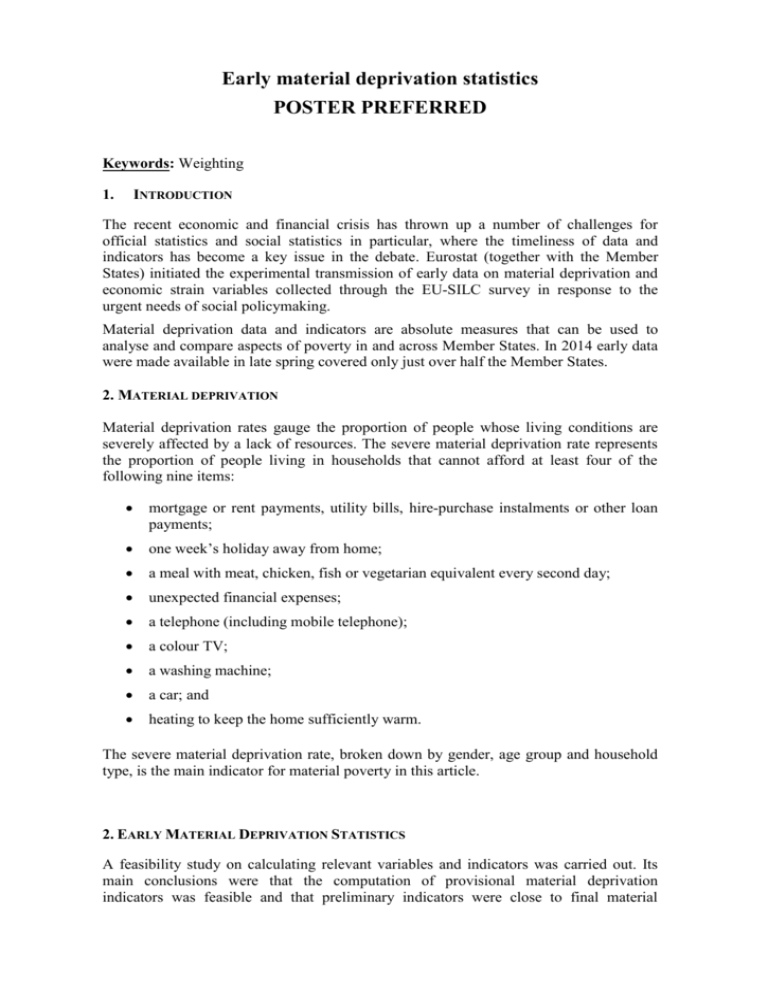
Early material deprivation statistics POSTER PREFERRED Keywords: Weighting 1. INTRODUCTION The recent economic and financial crisis has thrown up a number of challenges for official statistics and social statistics in particular, where the timeliness of data and indicators has become a key issue in the debate. Eurostat (together with the Member States) initiated the experimental transmission of early data on material deprivation and economic strain variables collected through the EU-SILC survey in response to the urgent needs of social policymaking. Material deprivation data and indicators are absolute measures that can be used to analyse and compare aspects of poverty in and across Member States. In 2014 early data were made available in late spring covered only just over half the Member States. 2. MATERIAL DEPRIVATION Material deprivation rates gauge the proportion of people whose living conditions are severely affected by a lack of resources. The severe material deprivation rate represents the proportion of people living in households that cannot afford at least four of the following nine items: mortgage or rent payments, utility bills, hire-purchase instalments or other loan payments; one week’s holiday away from home; a meal with meat, chicken, fish or vegetarian equivalent every second day; unexpected financial expenses; a telephone (including mobile telephone); a colour TV; a washing machine; a car; and heating to keep the home sufficiently warm. The severe material deprivation rate, broken down by gender, age group and household type, is the main indicator for material poverty in this article. 2. EARLY MATERIAL DEPRIVATION STATISTICS A feasibility study on calculating relevant variables and indicators was carried out. Its main conclusions were that the computation of provisional material deprivation indicators was feasible and that preliminary indicators were close to final material deprivation values. It found that there were two main reasons for discrepancies between early and final values: the application of preliminary cross-sectional EU-SILC weightings, as not all information needed to work out final weightings is available at the end of the data collection year; and for some Member States, data editing could be finalised only partially by the early data submission date. All EU-SILC microdata transmitted to Eurostat must contain individual and household weightings. In all household surveys, mainly because of non-response, some groups are over-represented in the raw data and others under-represented. These imbalances are usually dealt with by attaching a compensatory weighting to members of sub-groups thought to be over- or under-represented in the survey data. All survey estimates are calculated using these weightings. Data is calibrated to align totals from the survey to known totals from reliable external sources such as recent population statistics, including information on age, gender, regional breakdowns, the labour force, etc. All these variables might not be fully available to national statistical institutes at the time the early material deprivation variables have to be transmitted, i.e. at the beginning of the year after data collection. 3. THE TECHNICS TO IMPROVE THE COHERENCE BETWEEN PROVISIONAL AND FINAL ESTIMATES According to the analysis for improvement of the data coherence between the provisional and final indicators it is recommended to : -include in the early calibration all final calibration variables that are used in the final; -finalise the editing of all variables used to calculate material deprivation indicator before early submission as it increases significantly the quality of the early indicator. 5. CONCLUSIONS The computation of provisional material deprivation indicators is feasible and that preliminary indicators are close to final material deprivation values. Weighting and calibration are important elements for EU-SILC quality and they affect heavily variance of estimations. With this first analysis Eurostat would like to draw the attention on the importance of these elements on the SILC data quality.
